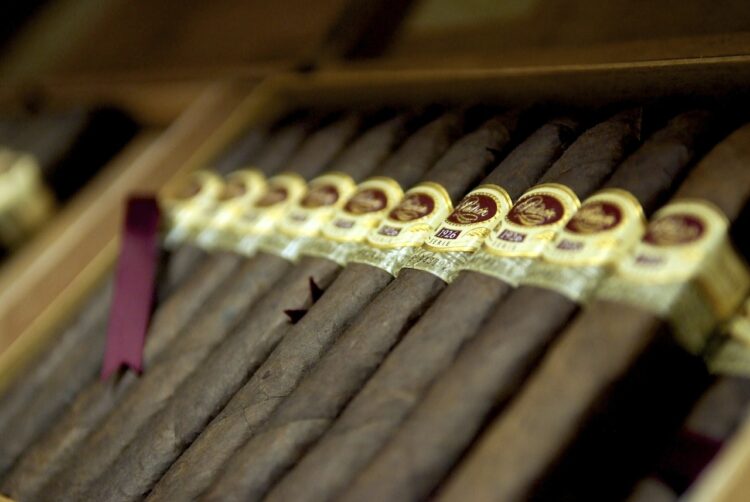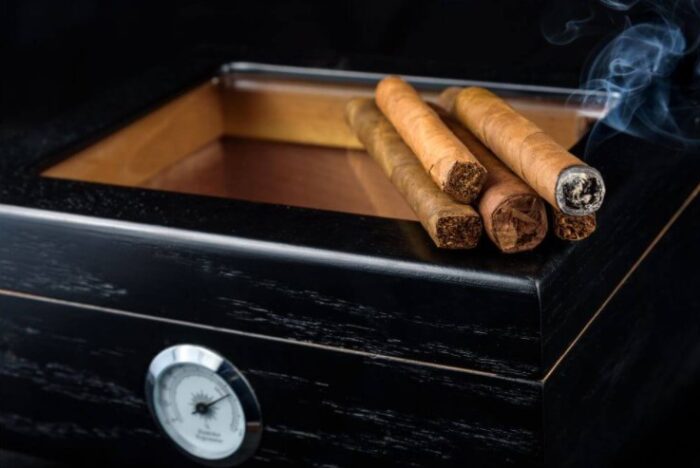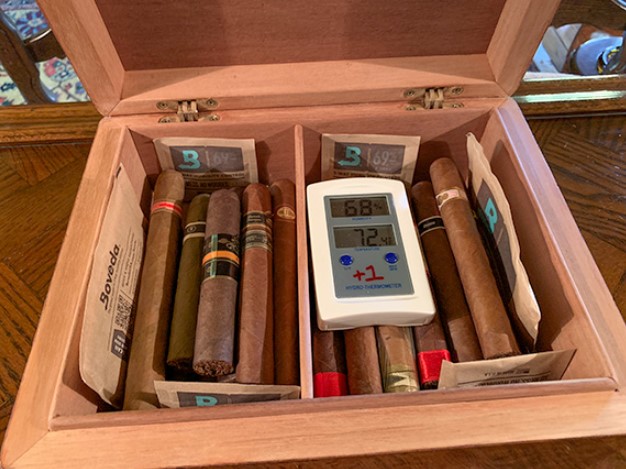Despite your best attempts to care for your cigars, you can make a mistake and end up with a dried-out cigar. All cigar smokers should avoid smoking a dry cigar since it produces foul-tasting smoke.
Whether you neglected to check the moisture levels in your humidor or left a cigar in isolation in your car, there are many ways we can cause a cigar to get dry unintentionally. Whatever the cause, there’s no need to panic because your cigar can be rehydrated.
It is vital not to push the process of rehydrating a cigar. It can take weeks or even months to get your cigar into the best shape again. A cigar that has not been adequately rehydrated will continue to smoke hot and have a harsh, disagreeable flavor.
What Causes Cigars to Dry?

The most prevalent cause for cigars to dry is either a lack of a humidor or a lack of attention to the one you do have. Several individuals can neglect to refill the humidification unit inside your humidor for an extended period simply because they are on vacation or too busy, which is one of the primary reasons for cigars to dry.
As the weather turns cooler, turning on the heat inside your home might result in a drier environment, which can affect the humidity levels in your humidor. Remember that the ideal condition for storing your cigar is 70 percent humidity and temperature in Fahrenheit.
When these conditions deteriorate, your cigars will progressively lose moisture and, as a result, their integrity. Fortunately, cigars do not dry out overnight, but if they do, rehydrating them before smoking is critical. Dry cigars have a harsh, one-dimensional flavor and burn considerably faster than usual.
What Is the Best Way to Tell if a Cigar Is Dried Out?

To know if a cigar is dried out, hold it between the thumb and index finger, and press it gently. The cigar is still fresh if you press its outer covering, and it immediately bounces back when you relieve the pressure. However, if it doesn’t bounce back, you know it’s dried out. A dry cigar is referred to as a hard cigar.
Don’t try to force it or apply more pressure than necessary because this could harm the wrapping. It is possible to salvage a dry cigar, but it is inconceivable to bring a cigar back to life if the outer covering is cracked or shattered.
You can use a hygrometer to determine the level of cigar dryness. If the humidity goes below 65 percent, the cigar is on the verge of drying out altogether. The longer the cigar gets dry, the more patience it will take to bring it back to life. It’s a lengthy procedure that could take weeks or even months to complete.
How To Rehydrate A Dry Cigar?
Because dry quality handmade cigars will require numerous steps to regain moisture, you must follow the techniques gradually to rehydrate your cigar.
1. Keep It In A Humid Environment

You may or may not already own a humidor, which is a humidity-controlled box with a tight seal for storing cigars, depending on how long you’ve been a cigar enthusiast. It’s important to emphasize right away that if you don’t already own a humidor, you should purchase one as soon as possible, as it’s critical for keeping cigars and avoiding dried-out sticks.
A full-fledged humidor is not the only way to keep your cigar rehydrated. Any environment with plenty of moisture in the air, such as a greenhouse or a cellar, would suffice. Assess the dryness of the cigar(s) you want to revive once you’ve found a particularly humid location. Is it true that the cigar stick is entirely dry, or that it is only partially dry?
Depending on how far the cigars have deteriorated, either obliterate the cover or crack the box open to allow moisture to enter (the drier the cigars, the more open you will want the container to be). You could also put a damp towel underneath the box for more moisture; just make sure you change it out regularly to avoid mold or mildew.
Do not forget to rotate the cigars in intervals to assure proper re-humidification. While you read about how to rehydrate the cigar, it is also crucial that you know the importance of good-quality cigars. You should always use high-quality cigars such as the ones available at Escobar Cigars.
2. Use Microwave
The water molecules within the cigar can be rehydrated through a microwave using radiofrequency. Employing this method has the added benefit of heating the entire cigar at the same time. It warms both the inside and the outside of the cigar. Once you have cut off the end of the cigar, microwave the rest of it for 10 seconds.
Then take out the cigar and blow out the vapor at the end. You can actually see the steam pouring out of the end if you do it in front of a light. Before blowing it out again, microwave it for a few seconds again. By the third time, there’s almost no steam left. Before smoking, give the cigar a half-hour to cool down, after which it would be as good as new.
3. Use Boveda Packs

While you’re on the go, keep your cigars safe with a Boveda Humidor Bag. The bag is smaller than a travel humidor and can easily be stowed in a backpack. Unlike a food storage bag, a humidor bag is closed. As a result, you’ll be able to protect your fine cigars from the unavoidable humidity changes that are so common on the road and so damaging to them.
Place your dry cigars in a plastic jar with a Boveda 69 percent for a month. Cigars lose moisture four times faster than they can absorb it properly. When you use Boveda to keep your cigars at a continuous, safe level of optimal humidity, you lessen the chance of the wrapper shattering when the filler absorbs moisture and swells.
Conclusion
The cigars will be plump with moisture and ready to smoke once they have been rehydrated. The amount of time it takes to rehydrate a cigar depends on its current condition, the type of cigar, and its size.
 Hi Boox Popular Magazine 2024
Hi Boox Popular Magazine 2024



